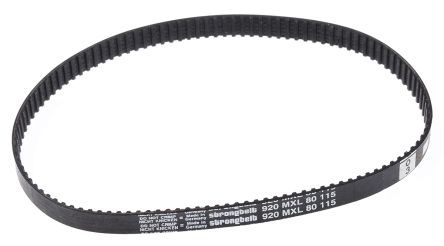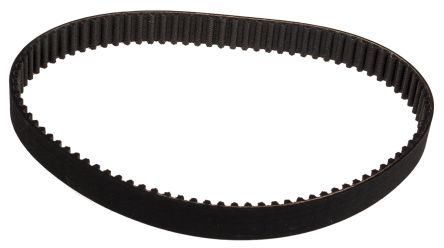
|
What are timing belts?
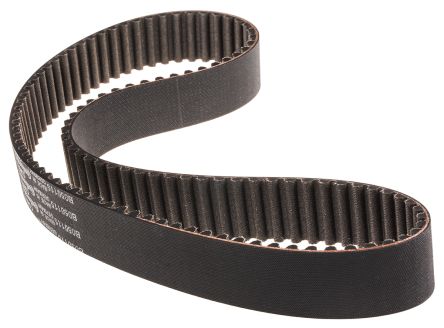
Timing belts, also known as cambelts or timing chains (although the latter is technically a different type of system, as we’ll see), are devices usually found fitted to the rotary mechanisms of a power transmission system.
They’re most often found playing a highly critical role in the smooth running of internal combustion engines, where they connect the crankshaft to the camshafts to maintain the precise alignments (timings) between these two key components as they rotate at different - but consistent, relative to one another - speeds.
In nearly all engines manufactured prior to the last 20+ years, timing belts would uniformly be manufactured from thick straps of tough, resilient rubber. To this day, hardwearing rubber materials remain a functionally ideal solution for the purpose of maintaining tension between vital moving parts in the short-to-mid-term.
However, over longer periods, rubber compounds are prone to degrading through constant exposure to excessive heat from the engine and contact with aggressive substances like motor oil. The result of this prolonged exposure would typically be a loss of optimal tension, which in turn negatively impacts on the precise opening and closing times of engine valves. This dictates the need for eventual replacement of a cambelt in order to restore faltering engine performance back to its previous peak.
As we’ll see further on in this guide, some modern variants of timing belts can be constructed from a variety of more high-tech materials, each of which brings with it a range of slightly different properties and features for consideration when planning future replacements and upgrades.
Types of timing belts
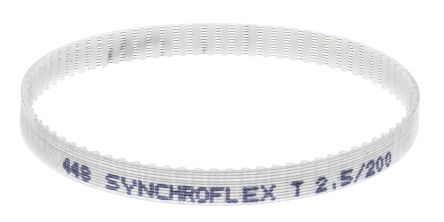
Note that a timing chain is just that - a physical linked chain, very much like a bicycle chain - as opposed to the loop of rubberised material typically found in a standard cambelt setup. There are upsides and downsides to each configuration.
The main benefit of a timing chain is of course that the metal construction makes it much more hardwearing, and far less prone to needing periodic replacement than a material belt. The drawbacks of timing chains are that they need constant lubrication to function properly, they’re a lot louder in operation than rubber or fabric-type belts, and that they can cause far more severe and widespread damage on the rare occasions that they fail catastrophically.
Moreover, the tensioners on a timing chain are controlled by the engine’s oil pressure, meaning it becomes even more critical to maintain this at the correct bar level at all times. By contrast, water pump pressure is usually what dictates the proper functioning of cambelt tensioners, which is why you’ll often get a recommendation to replace your water pump at the same time as having a new timing belt fitted.
Cambelts and timing belts provide a range of related functions in various other sorts of power transmission systems besides internal combustion engines. Common examples seen in everyday manufacturing and industrial processes include conveying belts and linear positioning belts.
Various configurations of timing belts are used in a wide range of products and processes. These might include, to name just a few:
- Office machinery
- Electronic data processing equipment (EDP)
- Textile machinery
- Wood processing machinery
- Machine tools
- Compressors
- Printing machinery
- Hydraulic gear pumps
- Building machinery
Timing belt uses
We know that a cambelt is an important component in internal combustion engines - but what does a timing belt do, exactly, and how do different types of timing belts play similarly crucial roles in a variety of other systems and mechanisms?
Timing belts are typically ridged with a circumference of protruding rubber ‘teeth’, and In an engine it’s these teeth that enable the loop of timing belt material to turn the camshafts via the crankshaft as the various parts rotate at a consistent ratio of speeds. Together, these components are thus responsible for opening and closing the intake and exhaust valves in an engine.
When a cambelt is in good working order and functioning correctly, the opening and closing of these valves is maintained at an optimal rhythm to match the up-and-down motion of pistons within the engine’s cylinders, allowing for smooth and efficient functioning of the entire apparatus as the engine cycles through each of its various ‘strokes’ (usually intake, compression, power and exhaust).
In the case of a broken or failing timing belt, it’s possible for engine valves to be left stuck in an open position, which risks serious damage to the mechanism of so-called ‘interference engines’ if they’re then able to be struck repeatedly by the pistons. Non-interference engines avoid this particular complication by keeping the valves and pistons separately confined, but the engine will still be effectively immobilised without a functioning cambelt installed.
Because timing belts loop around a series of pulleys to connect up all the relevant engine components in sequence, they tend to rely on a number of tensioners being attached in order to keep the ideal tension on the belt along its full length. These will usually need to be replaced along with new cambelts, as they’re almost always roughly the same age as the main belt and will generally have a similar sort of expected lifespan.
Timing belt materials
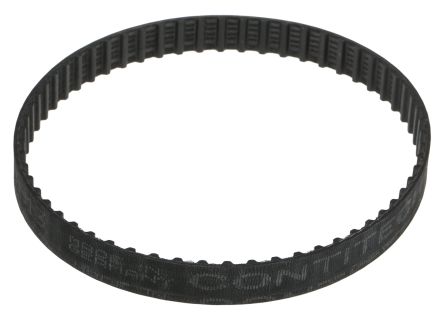
Numerous materials have been used in the design and manufacture of timing belts over the years, and research is continually ongoing into developing new, more robust, more power-efficient and less noisy alternatives.
Timing Belts - Rubber
Rubber timing belts are the traditional standard, widely used in a great many environments and applications. Most internal combustion engine cambelts, such as those used on the majority of cars (and certainly any made more than a decade ago) will have used a timing belt made from rubber.
It’s still a very common solution today, although more modern variants tend to include numerous types of temperature-resistant rubber compounds for better longevity and resistance to distortion. Other features you might come across in higher performance rubber timing belts could include high-strength compounds to guard against teeth shearing off, and reinforcing fibres for improved tensile strength and traction.
Shop Rubber Timing BeltsTiming Belts - Polyurethane
Polyurethane timing belts offer a long-lasting and highly energy-efficient solution for a wide range of different applications across a variety of sectors and industries as a means of transferring power. They have greater elasticity than rubber and are rated to different temperature settings and petrol resistance.
Timing belts made from polyurethane also tend to have high load capacities, along with high tensile strength. They’re resistant to oil, chemicals and abrasion, and are easy to clean and maintain, making them a popular choice for many types of power transmissions and roller conveyor systems, such as line-shaft conveyors.
Shop Polyurethane Timing BeltsTiming belts - fabric
Fabric timing belts tend to be favoured for high-performance settings and applications, where drives with very high acceleration forces need to be applied, as well as for the transmission of high torque at low speeds.
Timing belts made from fabric usually incorporate various materials that, used in certain combinations, can offer extraordinary tensile strength and high tear resistance for application in more extreme environments. Fabric compounds with especially low coefficients of friction and very high/low temperature resistance are increasingly common on today’s market.
Shop Fabric Timing BeltsTiming belt sizing
Because of the particular role timing belts play in synchronising the rotation speed of two differently sized shafts, there are a great many variables that need to be taken into consideration when assessing the correct belt sizing for the application and system you need it to fit to.
Key factors to take into account include the cambelt width, material and number of teeth or ‘pitch’ - common timing belt pitch ratings include 3mm, 5mm and 8mm, but the correct choice will depend entirely on the specifics of your system or project - as well as overall power transmission requirements and the various shaft speeds in the mechanism it’s being fitted to.
Both the environment in which the timing belt is being fitted to work in, and the subsequent suitability of material choices, will also have a profound impact on the precise sizing and configuration of the best timing belt for your needs.
Timing belt applications
As noted above, timing belts are also important components in a variety of other mechanical and industrial systems. Three of the more common applications are as follows:
Conveying belts - Timing belts on conveying systems are also usually toothed or ridged, and when used in combination with a toothed conveyor pulley will allow for precise and responsive belt movement control and traction. For an array of industries including packaging, automotive manufacturing, distribution and many more besides, this ability to accurately manoeuvre and position products and parts is key to the smooth running of the overall operation.Power transmission belts
All timing belts are essentially power transmission belts, insofar as they transfer power through the rotary motion of one or more components from one part of a machine to another. Specialist power transmission belts can be manufactured to very high performance levels for installation in a wide range of especially demanding applications, such as always-on industrial processing and heavy-duty agricultural machinery.
Linear positioning belts
Linear positioning belts are found in applications where a high degree of accuracy is required to manoeuvre and position components or parts. Polyurethane timing belts are often favoured in this sort of environment, because they tend to have relatively little stretch in them compared to more standard neoprene-type cambelts. This means there’s less chance of slippage or tooth deflection - this is important in linear positioning and conveying roles, where the belts are subject to very different load patterns than are typically placed on rotary motion and power transmission timing belts.
Timing belt tooth profiles
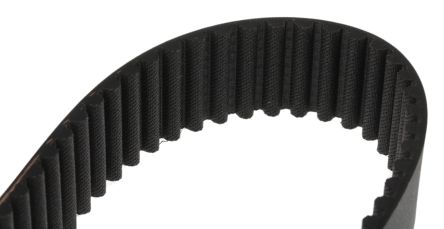
As noted above, there are a great many sizing variables - including width, rotation speed, pitch and more - that will collectively dictate what sort of product range will offer the best or most appropriate choice of cambelt for any given application. Another key factor that’s always important to consider will be timing belt tooth profiles.
Timing belt teeth can be arranged in various different configurations, depending on the intended application and environment the belt is to be deployed in. The most commonly found are as follows:
-
Trapezoidal belt - this type of tooth arrangement features a series of flat-topped squarish ridges. It’s perhaps the most frequently seen timing belt type in many applications, and is usually the leading choice for linear positioning belts and other precision conveying roles. Trapezoidal teeth are highly effective when it comes to force transmission, but at higher torques or speeds they can show a tendency towards faster wearing due to an increased concentration of stress forces on teeth of this shape.
-
Curvilinear belt - these feature a smoother and more rounded tooth shape, usually with deeper ridges between teeth than would generally be seen on trapezoidal belts. The latter characteristic reduces the risk of tension loss (belt ratcheting), while the slightly refined shape of curvilinear teeth helps to alleviate the higher concentration of stress forces suffered by trapezoidal teeth under increased speed and torque demands. The downside of curvilinear belt profiles is a slightly greater degree of backlash - the amount of ‘play’ between belt teeth and pulley grooves - which usually results in less accurate positioning.
Summary
Timing belts of all types play a vital role in the smooth running of a great many engines and other power transmission systems. While they’re an extremely common and widely available component seen in myriad day-to-day environments and applications, selecting the correct type, material, size and tooth profile to cope with the demands of its intended role is just as important as sourcing from a reliable brand and supplier.
For all further information on cambelts, diagnostics, tension gauges, alignment tools and all other aspects of power transmission systems and accessories, you’ll find a member of our support team will be happy to help if you visit our customer support pages.Product spotlights
Use the links below to shop some of our most popular timing belts:

